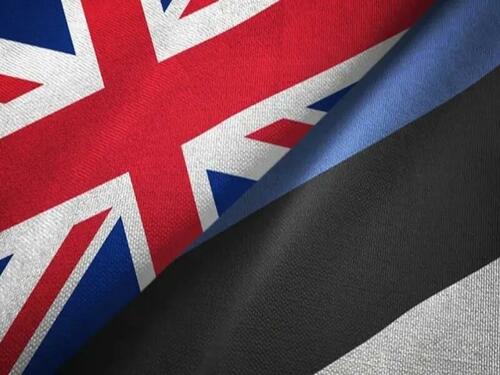Authored by Andrew Korybko via Substack,
The possible deployment of nuclear-capable F-35As there, which could be equipped with US air-to-ground nukes since the UK no longer has its own, would give London a leading role in managing the joint Arctic-Baltic front against Russia that’s expected to remain even after the Ukrainian Conflict ends…
Estonian Defense Minister Hanno Pevkur told the Postimees newspaper after last month’s NATO Summit that his country is interested in hosting nuclear-capable F-35As from its allies, with the outlet suggesting that the UK could deploy some of the 12 that it plans to purchase after they’re transferred. The UK’s other announcement that it’ll join NATO’s dual-capable nuclear aircraft mission raises the chance that these jets could be equipped with US nukes since the UK no longer has its own air-to-ground ones.
The Wall Street Journal explained how “U.K. Shifts Nuclear Doctrine With Purchase of U.S. Jets”, which could lead to it obtaining the aforesaid nukes from the US, while Kremlin spokesman Dmitry Peskov declared that Estonia’s readiness to host nuclear-capable jets from any NATO country poses an “immediate danger” to Russia. All this follows Russia’s Foreign Spy Service warning in mid-June that the Brits and Ukrainians are cooking up two false flag provocations in the Baltic to rope Trump into the war.
Seeing as how it was assessed in late April that “Estonia Might Become Europe’s Next Trouble Spot”, it’s therefore likely that they’ll let the UK deploy nuclear-capable F-35As at Tapa Army Base, where it already has some troops as part of its largest overseas deployment. Putting everything together, it can therefore be concluded that the UK is actively expanding its sphere of influence in the Baltic on anti-Russian pretexts and via associated means, with Estonia playing a leading role by hosting its regional forces.
The Baltic front of the New Cold War is connected to the Arctic one due to Finland joining the alliance in 2023 and Russia responding by building up its forces along their border to deter NATO-emanating threats from there. This joint front, which is expected to remain tense even after the Ukrainian Conflict ends, will also see the construction of the “EU Defense Line” that’ll stretch along Finland’s, the Baltic States’, and Poland’s eastern borders with Russia and Belarus as a 21st-century Iron Curtain.
It’s within this context that Trump reportedly plans to pull some US troops out of Central & Eastern Europe (CEE), perhaps in exchange for Russia reducing its own presence in Belarus (possibly including its tactical nukes), as part of their plans to build a new European security architecture. Be that as it may, the “EU Defense Line” – which includes new border fortifications and the deployment of extra-regional countries’ forces like the UK’s and Germany’s – ensures that the EU-Russian security dilemma will persist.
Russian Foreign Minister Sergey Lavrov recently said that the EU is becoming an extension of NATO, which is confirmed by these countries’ role in the “EU Defense Line”, their reaffirmed commitment to Ukraine during the latest NATO Summit, and the EU’s €800 billion “ReArm Europe Plan”. Therefore, the abovementioned security dilemma is also a NATO-Russian one, which might dramatically worsen even if there’s a mutual Russia-US pullback of forces in CEE should Trump give air-to-ground nukes to the UK.
The risk of World War III breaking out by miscalculation would remain sky-high in that event due to the ambiguity about whether every British-piloted F-35A that takes off from Estonia (even just for training) is equipped with American nukes as part of a first strike sneak attack. This dark scenario can only be averted by Trump refusing to give the UK air-to-ground nukes, but even if he declines, NATO-Russian tensions will still remain even after peace in Ukraine due to the increasingly British-led Arctic-Baltic front.
Loading…


















